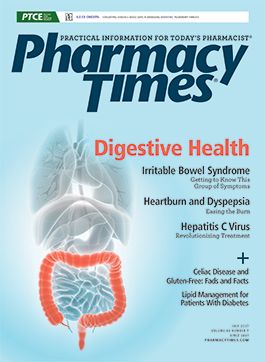Publication
Article
Pharmacy Times
Leg Cramps: A Sign of Underlying Illness?
Author(s):
Restless leg syndrome can be confused with leg cramps, but they are 2 distinct conditions.
Leg cramps are characterized by sudden, severe, and involuntary muscle contractions.1 Leg cramps commonly affect the calf muscles but may occur in the hamstrings or muscles of the feet, especially at night (ie nocturnal leg cramps).2-4 These nocturnal cramps that occur primarily during sleep are classically characterized as unilateral, painful, and palpable, involuntary muscle contractions that often are localized and have a sudden onset.5 Leg cramps may also occur during periods of rest in the day.
Although anyone can experience leg cramps, the incidence is highest in women and older adults, affecting an estimated 33% of individuals older than 60 and an estimated 50% of individuals older than 80.1 Individuals with leg cramps may complain of sleep disturbances that may negatively affect their overall well-being. Pregnant women are extremely prone to leg cramps at night, especially during the second and third trimesters.1 Up to 20% of patients who experience leg cramps have troublesome enough daily symptoms that they seek medical attention.6
The majority of leg cramps are idiopathic and harmless, but some may result from underlying illnesses such as diabetes or peripheral artery disease.1,6 Other examples of secondary causes include neurologic disorders, structural disorders or positioning of the leg, and metabolic disorders, including extracellular fluid volume depletion and electrolyte disturbances. Medications such as statins, diuretics, and oral contraceptives may increase the risk of leg cramps, too.1,6
Restless leg syndrome (RLS) can be confused with leg cramps, but they are 2 distinct conditions.5 RLS is a neurologic movement disorder that causes limb sensations in which a person exhibits an uncontrollable urge to move the legs and is often associated with disruptions in sleep.5 Like RLS, leg cramps may have a circadian pattern and frequently occur at rest; however, nocturnal leg cramps are linked to physical changes, including muscle hardening and pain, which are not observed in RLS.5
TREATMENT
Although studies have revealed that quinine sulfate may be helpful in treating leg cramps, the FDA banned its OTC use in 1994 because of the risk for potentially dangerous and fatal adverse reactions, thrombocytopenia, and cardiac arrhythmia.7 In 2006, the FDA also banned the marketing of off-label prescription quinine products. Quinine remains available by prescription for the treatment of malaria, but its risks as prophylaxis or a treatment for nocturnal leg cramps outweigh any potential benefits, and the FDA warns against its use in prescription form.7,8 Fardet et al8 report that the use of quinine for nocturnal leg cramps was linked to a 3-fold higher mortality rate in individuals younger than 50.
No specific medication is indicated for leg cramps; however, several have been used, including calcium-channel blockers, such as diltiazem, and vitamin B complex.1,7 Some health care providers may suggest the use of OTC analgesics for pain in certain cases. Also available are nonprescription products formulated with homeopathic ingredients for the treatment of leg cramps. Patients with preexisting medical conditions should consult their primary health care provider before taking any medication, including OTC products, to avoid potential contraindications or drug—drug interactions.
NONPHARMACOLOGIC MEASURES AND PREVENTIVE STRATEGIES
Nonpharmacologic therapies such as hydration, warm or cold compresses, exercise, and muscle stretches may provide some relief from leg cramps.7 Leg cramps can be prevented if the underlying cause is treated. Other preventive measures may include the following:
- Maintaining adequate hydration
- Stretching leg muscles before going to sleep
- Wearing shoes that fit properly
- Establishing a routine exercise regimen, if appropriate
Patients who experience severe and/or continual leg cramps should be encouraged to seek further assistance from their primary health care provider.
References
1. Nordqvist C. Leg cramps: causes, diagnosis, and treatments. Medical News Today website. http://medicalnewstoday.com/articles/180160.php. Published December 10, 2015. Accessed June 7, 2017.
2. Hallegraeff J, de Greef M, Krijnen W, et al. Criteria in diagnosing nocturnal leg cramps: a systematic review. BioMed Central website. bmcfampract.biomedcentral.com/articles/10.1186/s12875-017-0600-x. Published February 28, 2017. Accessed June 14, 2017.
3. Nocturnal leg cramps. Cleveland Clinic website. http://my.clevelandclinic.org/health/articles/nocturnal-leg-cramps. Published October 2014. Accessed June 7, 2017.
4. Monderer RS, Wu WP, Thorpy MJ. Nocturnal leg cramps. Curr Neurol Neurosci Rep. 2010;10(1):53-59. doi: 10.1007/s11910-009-0079-5.
5. Bozorg A. Restless legs syndrome differential diagnosis. Medscape website. http://emedicine.medscape.com/article/1188327-differential#1. Published February 22, 2017. Accessed June 7, 2017.
6. Allen RE, Kirby KA. Nocturnal leg cramps. Am Fam Physician. 2012;86(4):350-355.
7. Walker J. How can leg cramps be treated? The Medscape website. http://medscape.com/viewarticle/723218. Published June 10, 2014. Accessed June 7, 2017.
8. Fardet L, Nazareth I, Petersen I. Association between long-term quinine exposure and all-cause mortality. JAMA. 2017;317(18):1907-1909. doi: 10.1001/jama.2017.2332.
Ms. Terrie is a clinical pharmacist and medical writer based in Haymarket, Virginia.







